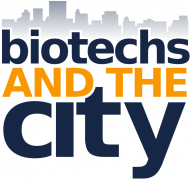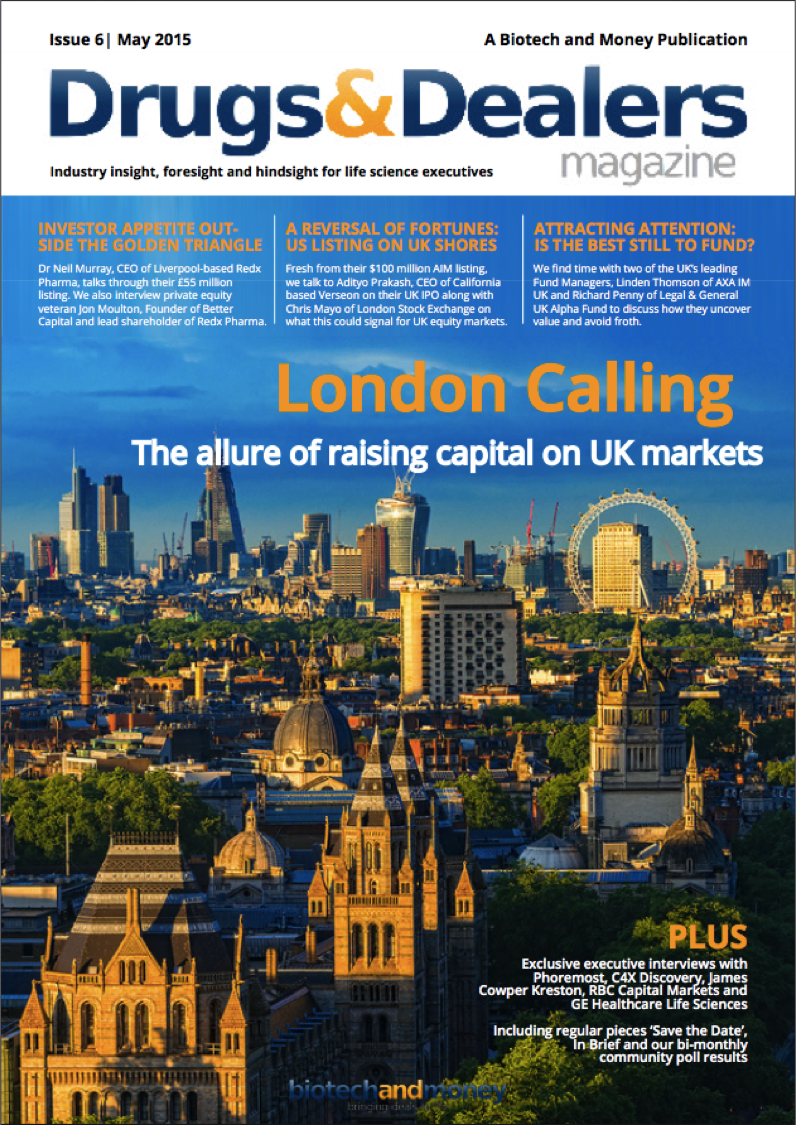‘Biotechs and the City’ Licensing & Partnerships
Quality sites
- Online Casinos UK
- Casino Non Aams
- Casinos Not On Gamstop
- UK Casinos Not On Gamstop
- Best UK Casinos Not On Gamstop
- Casino Sites Not On Gamstop
- Meilleur Casino En Ligne Live
- Casino Sites Not On Gamstop
- Casino Sites Not On Gamstop
- Non Gamstop Casino Sites UK
- Non Gamstop Casinos
- Best Online Casino Canada
- Casino Sites Not On Gamstop
- Non Gamstop Casino UK
- UK Online Casinos Not On Gamstop
- Best Slot Sites 2025
- Casinos Not On Gamstop
- Meilleur Casino En Ligne
- Non Gamstop Casinos
- Slots Not On Gamstop
- Non Gamstop Casino
- New Online Casinos Not Registered With Gamstop
- Casino Non Aams Sicuri
- Casino Sites UK Not On Gamstop
- Casino Non Aams Italia
- Bitcoin Casino
- Meilleur Site Casino En Ligne Belgique
- Casino App
- Migliori Siti Scommesse Non Aams
- Meilleur Casino En Ligne De France
- Nouveau Jeu Casino En Ligne
‘Biotechs and the City – Licensing and Partnerships’ was the latest in a series of evening panel and networking receptions for UK biopharma executives held in November. The following is the exclusive transcript from it’s panelists. Topics included What does big pharma want from biotech and vice versa? Are asset-centric vehicles more attractive to dealmakers? How can you mitigate risk and maximise mutual benefit in partnerships? and what are the most innovative deal making structures that are working?
The panelists were Beverley Carr, VP, BD, Immunoinflammation Therapy Area, GSK; David Colpman, Former Global Head of Business Development, Shire; Jane Dancer, Chief Business Officer, F-Star; Neill Mackenzie, CEO, Trimunocor and CBO, Biotechnol and Ajan Reginald, Executive Director and Co-Founder, Cell Therapy Ltd.
B&M: What does big pharma want from biotech and vice versa? Is it changing, and if so, how?
AR: If you’ve got something that’s a new class of drug or a new type of invalidated target or you think you’re going to be first in class or best in class then you have to be really careful about which pharma you go to. People give you advice like go and see a couple of pharma companies, get some advice, that will help you for your next pitch but actually it kills theconfidence of your poor scientist who is destroyed after they’ve been to see 2 or 3 pharma companies who don’t understand anything about what you’re talking about and ask you all the wrong questions. So I think it is very important to ask the question which is what big pharma wants depends on where they are on the innovation curve and then where they want to do a deal.
JD: What biotech want is to hear what each pharma want. Some Pharma companies are much better at telling you what they want, but if a company doesn’t know what they want you can have two conversations with the same company, one goes nowhere and the other one leads to something.
NM: It can be totally unclear what they really want because you turn up with what is apparently what they do want and then turn around and say no we’re not in that area. There’s a timeliness so when you rock up to a pharma, where are they on the innovation side because that will change. Right now it’s really risky early stage stuff. It’s cheap that’s why they’re doing it whereas a few years ago it was all ‘have you got any phase III assets.
DC: Sometimes pharma’s don’t know what they want until its presented to them and one thing I guess is true is that at Shire we would say we’re not interested in this therapeutic area but if a company came up for sale in one of those areas we’d take that very seriously if we knew there was an auction going on and it was a one-off opportunity so you could change your mind, you could be opportunistic. You need validated targets, you need all the surrounding data but what pharma really likes is clean deals.
NM: I think there’s even more to that. the number of deals I’ve walked away from because there’s an IP red flag or there were stacked royalties from a university that thought they should get 10% of everything forever with reach through royalties and then inventors or founders that wanted to have a premium on their shares. The cleaner you can make that because it’s a public company has to work.
B&M: If we pick up on deals that is the subject of today’s panel. If I could ask the panel the most common mistakes that are currently being made in a transaction and if you could perhaps give any examples you might have come across?
BC: I would say, looking back at some of the deals GSK might have done if you negotiate too hard and you don’t pay enough at the right time, if you’re in a collaboration then there is no point in being tough in the negotiation and ending up in a collaboration with a biotech which isn’t able to function or delivery what it needs to deliver.
NM: What we’re thinking about at the moment is do we actually want to do a partnership with a pharma company and the answer to that is ‘no’ because we’re not capable of doing it. But when we go to pharma companies some want to do partnerships. For me, as a biotech company, just be really realistic, do you really want to go back into pharma with committees to do everything.
B&M: That’s a good Segway to the next focus which is the conversation success and what does make for a successful deal. Jane perhaps you could start us off?
JD: Some of it has just been touched on where you’ve got alignment and there’s a real motive to get it done and you get the momentum and you can do these things really quickly. We just did this deal with BMS and that was 45 days from signing the letter to signing the contract. It was a complicated deal but the circumstances that allowed us to do that was competition, exclusivity and they had a threat so they were well motivated to move on. Just something else to throw in there, what’s helpful is when you contract, as biotech, with people in pharma who understand what it is I like to be in biotech. Sometimes when you’re dealing with people who don’t know what it’s like in our world, and the same again if you’ve ever worked in pharma, you can understand why it takes a month to get sign off as they go through those seven different committees to try and get all their stakeholders rounded up and herd the cats. So I think that helps as well if there was a lot more of fluidity, people moving backwards and forwards between the two. Perhaps empathy, understanding and mutual respect.
B&M: How does one go about achieving that? Is it about finding the right people to work with in the first place?
JD: You don’t always have a choice as to who is going to be around the table, so you get what you’re given.
AR: I think a really simple rule is find out who can actually sign off on the deal. It sounds like a really crazy thing, but actually it varies in every company. So find out, you can find it out from, this is actually what VC’s are very good at and very helpful with. They can tell you roughly who can sign off within a company and at what level. Because with my understanding that varies enormously.
B&M: I interviewed Kevin Johnson, who many of you know from Index Ventures the other day. Something he said which was interesting was this idea of momentum. Momentum is your friend in order to make a deal happen, and the key is to keep the positive energy going. Does anyone want to comment on that?
DC: Sometimes I’m advising people who are out-licencing, they’re already talking to one party and that party is very interested in their product, and I always say if you find the second, third, fourth party, not only will you get something done faster and a better deal financially, but you’ll get it done quicker, if you’ve got competition.
So I’m really a big proponent of running competitive processes. Having said that, I think if you’re out-licencing, it’s really tough to get everyone on the same timeline and really tough to run a proper
auction, which you could do if you had a marketed product and people could see the value. It’s really tough to achieve but that’s the key to getting a good deal.
Certainly at Shire, if we felt that people were seriously talking to other people and they could be our competitors, absolutely it spurs attention, focuses attention, at Shire. At the end of the day we’re willing to pay whatever it took to get leading technologies, and we did that.
B&M: So pointing to the competitive threat sharpens focus.
NM: It’s fear and fashion. Pharma are run by fear and fashion. There is innovation cycle, but you cut across that if there’s a fear of losing it, because that goes up to the CEO. The CEO will ask the leading guy why did you lose that deal? That would come straight down from the CEO, why did you lose that deal? They’ll be out of money, they’ll be asked, why did you lose that deal.
Then the fashion bit. I can tell you the different fashions over the years because I’ve been around a long time, but there’s fashion areas where everyone wants to jump into, everyone wants to part of, and they cut across the strategic and tactical stuff. If there’s something that becomes fashionable and everyone is after it, you’re on a quick timeline.
DC: Let me mention one other thing that might not be obvious, and it can play either way, and that’s the time of year. You get to this time of year, and one or two things is either going to happen, the pharma company wants to close a deal fast because they have the money available this year but haven’t got it next year. I’m talking about R&D budgets underspent to make sure it’s fully committed. But for all sorts of reasons people can be very keen to close deals at this time of year.
But conversely the R&D money is spent, you’ve already got your bonus, you want to put it into next year. Funny things can happen in November and December.
BC: At the other times they don’t know what news they’re going to put out. So JP Morgan, if they’re doing that, that can also focus their minds.
B&M: Some say there’s a huge disconnect between biotech, VC’s and pharma, do you agree with that? If so what is the nature of that disconnect and beyond that how can it be addressed? David?
DC: They’ve each got their own goals about what they want to do, sometimes they coincide and sometimes they don’t. But there’s no way that for me there’s anything that says, ‘VC’s don’t understand us’. They don’t have to understand us, they have to make a return on what they’re doing. You know for the big pharma company again, they have to deliver returns to their shareholders and they have to do it in the best way they can. That doesn’t always mean that every company gets the strategy right. But they live in their own environments, they live in their own worlds, and I don’t think there’s any reason for them to be disconnected.
AR: I think you’re right. There’s no point in a biotech company complaining about VC’s when you let them in, because that’s what they are. That’s not negative. You as a biotech company, whatever your goal is, if your goal is to change the world with a revolutionary medicine, if you want to exit with a lot of money, you know what your goal is.
A VC as you quite rightly point out has a goal, and is measured quantitatively and transparently so you shouldn’t complain about it. So if you can do it, then don’t have any VC’s, which is what we’ve done.
We started our company backwards, we’re always ready for diligence, and we don’t have any venture capital and continue to not have any venture capital.
So I think I agree with what you’re saying, but it’s to understand in an ideal world what the motivations are of your financing partner. As you rightly pointed out you don’t get to choose that too often. If you’re short of money and have a great innovation and want to go forward, you have to take money from a VC, which means you have to live with the consequences of your decision.
NM: No you don’t have to take from a VC. I mean it’s a brilliant model, it’s exactly what I did with Oxford Biomedica, but we took it straight on, we listed onto AIM from day ome. Never mind the right experiments, we hadn’t done any experiments. We had 5 patents out of Oxford University, it was the good old days. VC’s said we can’t do it Neill, I said why can’t we do it? You haven’t got our financial acumen. I said what exactly is that I’m missing.
Eventually we’ve raised £80 million off market, and it never saw a VC ever. Now, it’s still going 20 years later.
AR: I think VC’s can add huge amount of value. I think the problem is that at some level biotechs have one intrinsic advantage, speed. So you’ve got to be able to make decisions fast and execute them faster. If you change your seven pharma committees for a VC committee instead, you’ve lost speed, you’ve lost direction, and you’ve lost your ability to make rational decisions. I think it’s just working out where you need the value added.
Audience Question: Isn’t licencing and partnership an alternative to VC?
NM: There could be a model there, in one of the companies I’m trying to do it that way. Not talking to VC’s but just talking to pharma about partnering and trying to partner my way into cash.
JD: So one of the issues of course we all know about is VC’s have to make their exit, their cash back, it’s their timing things. Biotech can be quick. But maybe not quick enough when it comes to drug discovery, it’s quite a challenge to get a decent value inflection in one year.
So again going to corporates, going to the markets, is one way. That’s where you all start out and it’s hunky dory, they put the money in to begin with and it takes a bit longer, the funds are at all different stages, it all gets a bit messy. That’s when it can get a bit difficult.
BC: I guess you know we’re in it to make medicines. VC’s are in it to make money. They’re not always aligned. So there is a disconnect, yes.
B&M: What do you think about the idea of pharma getting closer and closer to academia, and should they cut out the VC middle man?
BC: Yes, I mean we’ve done that in some of our deal structures. We’ve done it in a number of different ways. We also work with VC’s as well. I do think that there is a lot of interest a VC change. In America and a number of the other pharma’s we looked at how to reach out to academics and work with them in a different way, and part of that is cutting out the VC. The requirement for a large return on capital is very challenging. There’s probably a place for all of these models.
DC: I’m out of date, but does anyone know of a deal where a pharma company worked directly with an academic and produced anything? By the time I left they hadn’t.
Lawrence Barker: At GSK we have one that’s currently in phase 1, phase 1a and phase 1b. Looking at someone we worked with across the table at a London university to do that, what six years ago now?
JD: We worked with UCL for many years and they, yes they’ve definitely done deals with have eventually taken products onto the market. It tends to be a series of transactions that have happened over the years. So rather than the university doing one deal with one company that then goes through the full clinical programme and launches the product isn’t so common. But as we all know the technology eventually comes to the market. So it is good, but it might not necessarily do so in one deal.
B&M: What is attractive about asset centric vehicles? If we start with Jane, because at F-star you do take this approach.
JD: So for those of you who didn’t see the deal we did, we’re a platform company that has programmes and that can be difficult particularly when you think about the timeline you need to exit, you’re under pressure to get a return to your investors. You’ve got a bundle of disparate assets, you’ve got some companies out there, pharma, who are interested in the platform but not the assets and the programmes if you like but not the platform.
What often happens, it happened at the last company I was in and I’ve heard of many other cases, you end up having to sell one and discounting the other. So you can’t get someone that loves them all as much, they like one a bit and not the other. You end up spitting the other bit out. It’s not unusual. So what we did was said ok what we’ll do rather than try and keep it all bundled up, we’ll turn our company into an asset centric model. So we’ll keep the platform in one company and we’ll set up separate companies that we’ll put the programmes in. These are separate arm’s length companies, not subsidiaries. Set the companies up as corporate, then licence the IP that was needed for the programmes into those companies and support them through the service agreement. Because all the people and the infrastructure, all the stuff, the dirty stuff that pharma doesn’t want to buy because as David say they want nice clean deals.
So we set up a separate company. We’re called F-star, it was called F-star Alpha. Also one of the other advantages was we were struggling at the time to get any of the investments into the company, because again the investors like the pharma have different wants. Some were interested in the lead programme, some weren’t, so by putting it in a separate vehicle we could get the investors from those who wanted to invest in it and those who didn’t, didn’t have to participate.
The next step was to sell it. So we did a deal with BMS where they paid £50 million up front for an option to acquire Alpha and the lead programme. The advantage there of course is you’re selling equity not an asset, so it’s a much more tax efficient way of disposing of an asset, it gets the cash back to the shareholders. So it worked very well for us.
AR: Can I ask a quick question? What if the key success criteria for the deal are the people you’ve got, who know how to develop the product? Do they go with it?
JD: No they don’t, so the way the deal works is the programme is transferred across to BMS. It picks up on the point that they have a much bigger drug development operation than we have, and we believe that BMS know how to develop drugs and oncology. So they’ve taken it on lock stock and barrel.
The way we work is that our core competence is in the platform of drug discovery as we move into IND enabling studies we’re actually virtual. So that makes it easier for us to then transfer it across with very little pain.
It was set up in a way, it’s like how you have your due diligence model ready, ours was setup to transfer so everything could be moved across very easily.
This summary was recently featured in January’s Drugs & Dealers Magazine, the official online publication of Biotech and Money. Providing industry insight, foresight and hindsight for Life Science executives. Download the full Magazine here.





Leave a comment